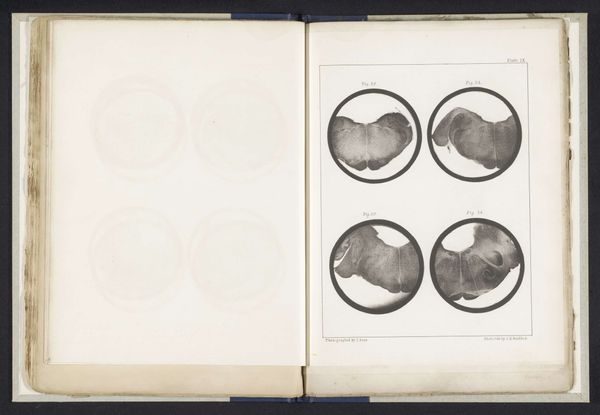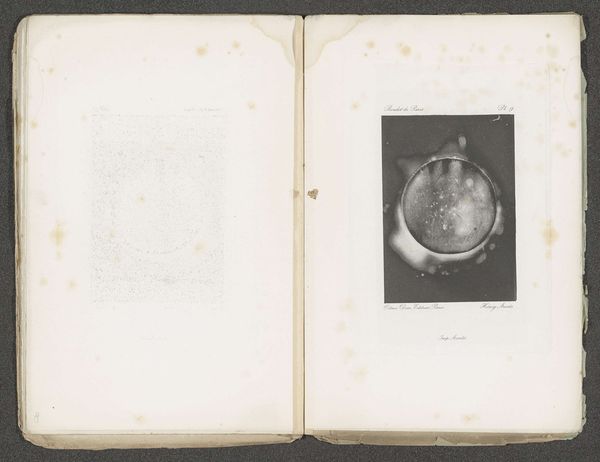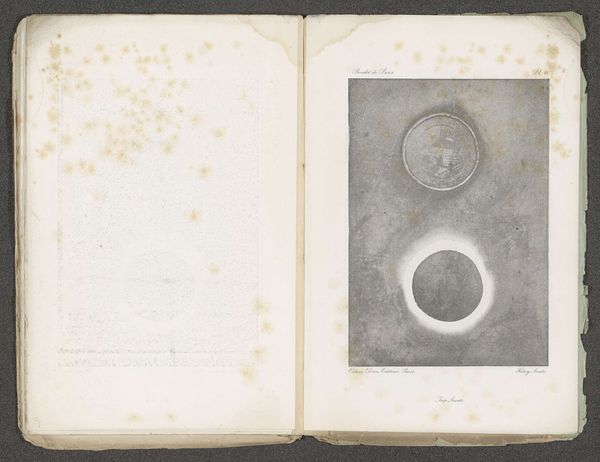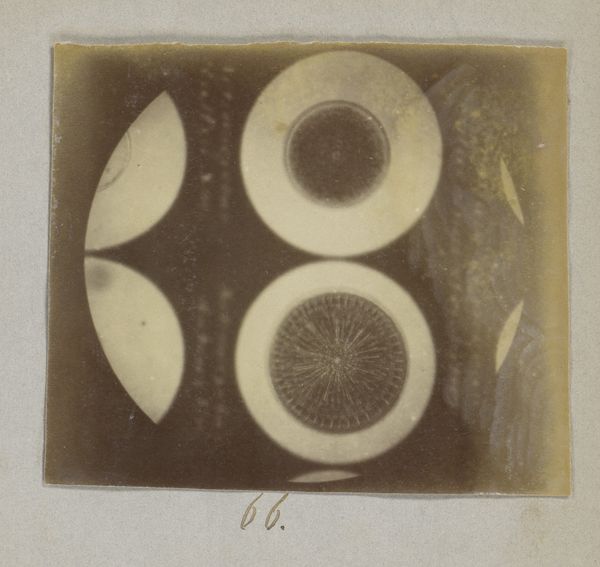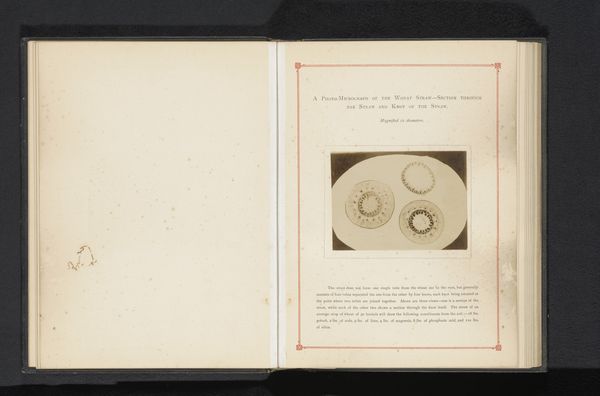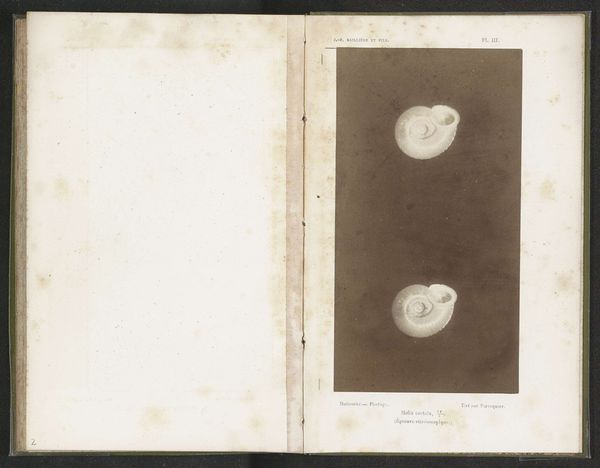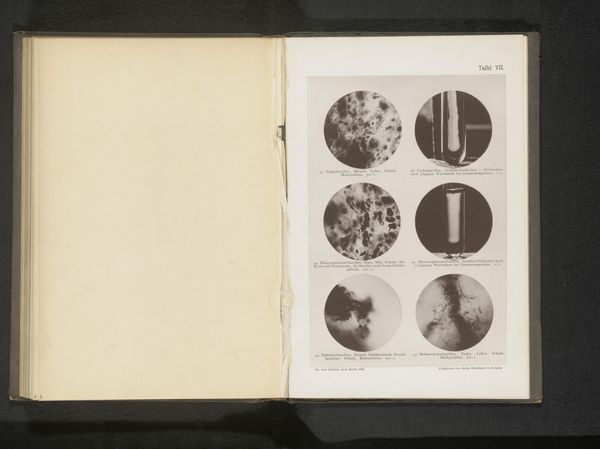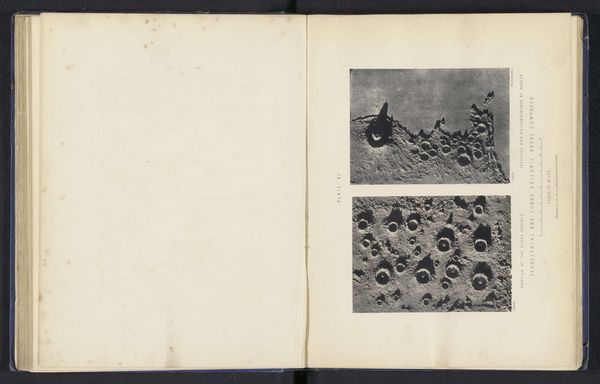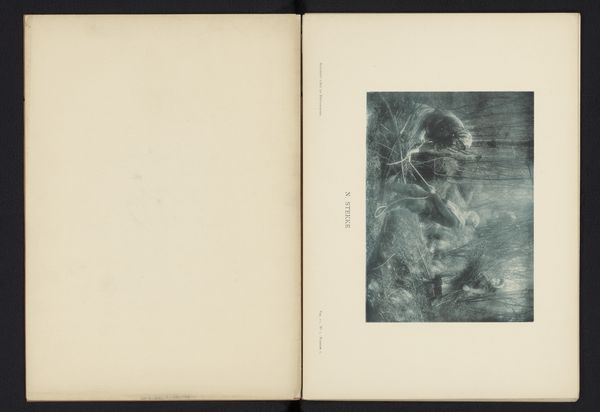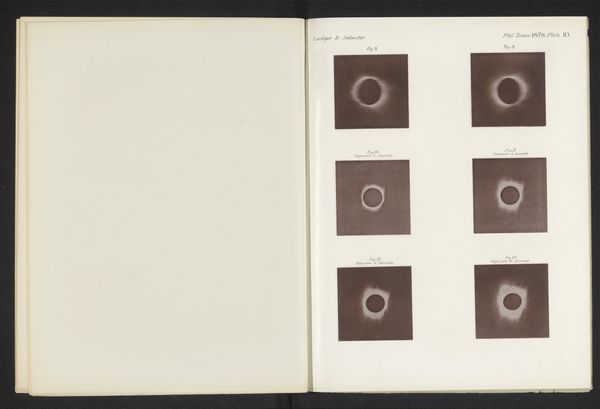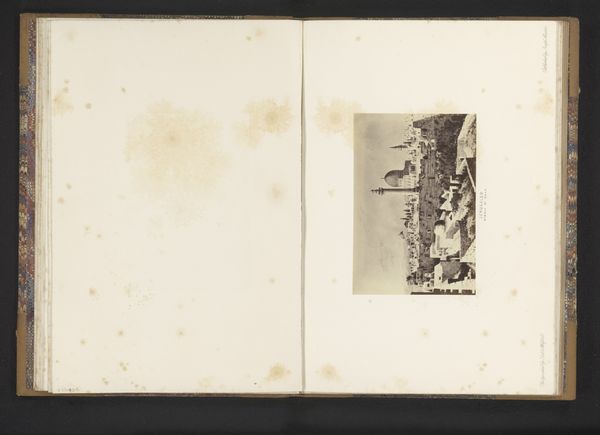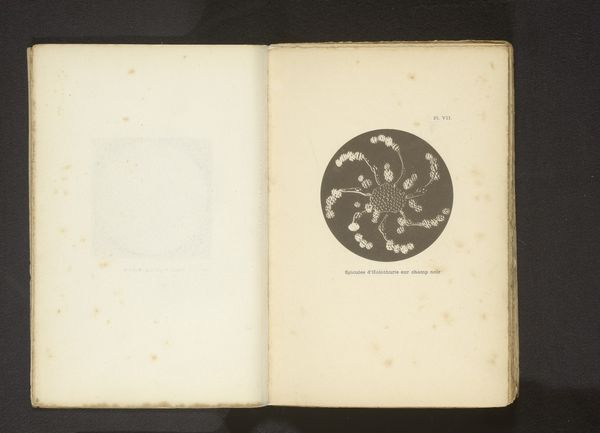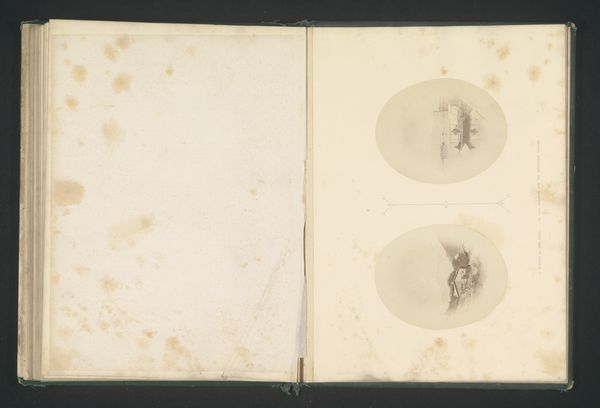
drawing, paper, ink
#
drawing
#
paper
#
ink
#
coloured pencil
#
geometric
#
academic-art
#
watercolor
Dimensions: height 162 mm, width 122 mm
Copyright: Rijks Museum: Open Domain
Curator: Immediately, there's something unsettling, almost clinical about this image. The starkness… it feels like an experiment captured. Editor: This is "Elektrische stroom tussen zes munten," or "Electrical Current Between Six Coins," made by Maurice Boudet de Paris sometime before 1886. The materials used are ink, drawing, and watercolor on paper. It appears to be part of a larger academic or scientific project. Curator: Yes, that cold, calculating feeling is amplified. These geometric shapes and precise lines bring to mind the pseudoscientific phrenology charts of the time. It's a strange, detached observation of... currency. Editor: I agree. And observe how the electric currents are rendered – almost like living entities reaching out. This use of light and dark feels alchemical; the coins could easily be read as planets influencing each other. The question is, how complicit was the artist in the legitimization of systems that valued some groups over others, represented as different coin sizes perhaps? Curator: That's fascinating, linking it to questions of social hierarchy. I immediately see the implied labor behind coin production, their circulation as indicative of capital and the ways that power literally flowed through the hands, and, perhaps more aptly, away from the hands of certain individuals. Editor: Considering the use of drawing and watercolor on paper, how do those specific choices relate to this desire to observe, quantify, even control what seems uncontrollable, this very ephemeral idea of electricity? It elevates the simple materials into documents, enshrining even failed observations into permanent lessons. Curator: Looking at the acidic condition of the paper really speaks to this passage of time and suggests at how our own knowledge and interpretation of historical artifacts can erode. Editor: This artwork is a stark reminder of the power dynamics embedded within supposedly objective scientific endeavors and serves as both historical record and tool of observation on our own values and judgments today. Curator: It really begs us to investigate the relationship between observation, power, and materiality as integral parts of knowledge construction itself.
Comments
No comments
Be the first to comment and join the conversation on the ultimate creative platform.

